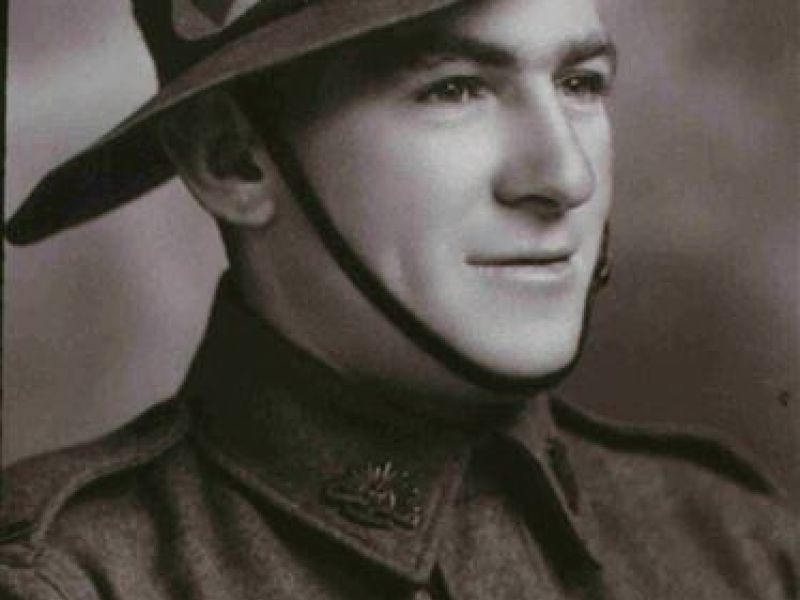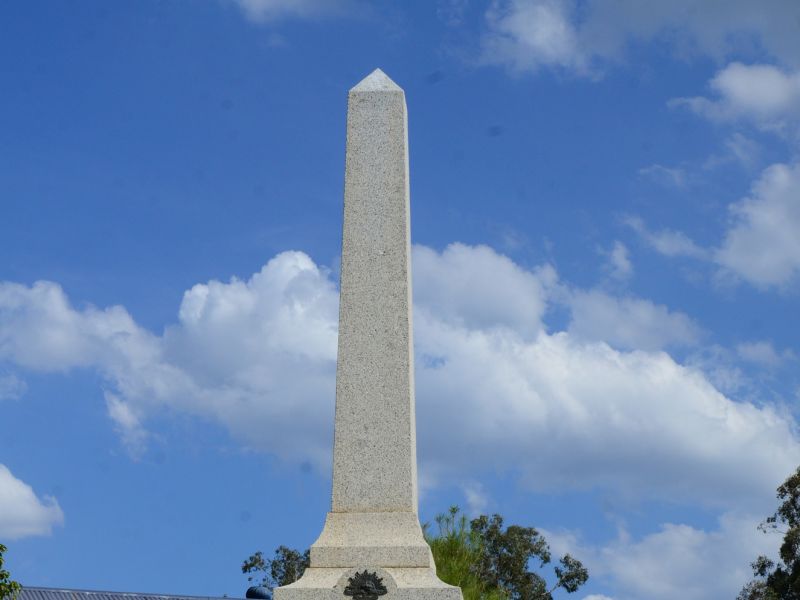Albert Ernest Mitchell
In the early hours of the 22nd of June, 1942, 1054 prisoners of war (209 civilians and 845 military personnel) were awakened at Malaguna Road Camp on the island of New Britain, and told to get ready to move. Taken captive when the Japanese had invaded the island, they were to be taken to Japan, to be used as slave labour. Conditions on the ship were beyond humane. Little food and water, and inadequate sanitary arrangements. The outward appearance of the Montevideo Maru was that of a standard Japanese transport. There were no special markings to indicate she was carrying prisoners of war.
At 0229 hours, on the morning of July the 1st, disaster struck. Two explosions were felt, both on the starboard side in holds No. 4 and No. 5. As the ship began to list to the starboard side and began going down from her stern, the Captain called to abandon ship. At 0240 hours she disappeared completely from the surface. Of the 1054 prisoners and 88 crew on board, only approximately 20 survived. The survivors were all Japanese.
The Montevideo Maru had been tracked by the US submarine USS Sturgeon, under the command of Lt. Cdr. William Wright, for over four hours. The Americans had no idea that they had just played a part in Australia’s worst maritime disaster.
In April, 2023, Sydney based Silent Foundation, and the Dutch company Fugro, located the wreck of the Montevideo Maru at a depth of more than 4000 metres, off the coast of the Philippines. No longer will the 1054 prisoners have “no known grave” next to their names.
Albert was born on the 22nd of September, 1918, near Albury, New South Wales. He was the youngest of possibly three children of Ernest Harold and Leila Muriel (née Roach) Mitchell. The family would live in the Bethanga and Huon areas of the Upper Murray. Just prior to enlisting, Albert was listed on the Australian Electoral Roll as being a farm hand on the family property “Glen Corrie” at Huon.
It was the 24th of June, 1940, when Albert fronted up to the recruitment centre at Caulfield and enlisted in the 2nd AIF. He was allocated the Army Number VX29553 and taken on strength with the RRD (Recruit Reception Depot). Five days later he was transferred to No. 10 Training Depot at Bendigo in central Victoria. On the 6th of July he was admitted to the Bendigo Base Hospital, although the reason was not recorded. By the 11th of July he had rejoined his unit. A transfer to the 2/22nd Battalion at Bendigo occurred on the 21st of September and early in the new year he was posted to the rest of the 2/22nd which was stationed at Bonegilla, Victoria.
Albert’s journey from Bonegilla to Rabaul was the same as Tom Cody’s travelling on the TSS Zealandia. He had only been in Rabaul for less than a week before he reported sick to the Force Hospital. His stay was short, only three days, although he would be admitted to hospital on two more occasions, once with gastritis and once with malaria. He would report back to his unit on the 28th of November, just over one week before Japan’s attack on Pearl Harbour and other locations.
R Company of the 2/22nd was under the command of Captain Frank E. “Eric” Shier. In the defence of Rabaul, the Company was responsible for Praed Point, which was not only at the entrance to Blanche Bay, but also where the coastal guns were located. At the start of the Japanese invasion on the 23rd of January the anti aircraft gunners were ordered by the commanding officer on Rabaul, Colonel John Scanlan, to destroy the guns. R Company was ordered to evacuate their position on Crater Peninsula and to withdraw to a place called Four Ways, where Colonel Scanlan had established his new headquarters.
As Japanese troops pushed further inland, Colonel Scanlan gave the surprising order “every man for himself”. It was not what many soldiers wanted to hear and some junior officers took it upon themselves to organise groups and to withdraw in a supportive manner. Some groups moved north, others south, still others took the inland route in an attempt to reach the south western coast of New Britain and hopefully locate a boat to take them across to New Guinea. Albert must have joined a group heading towards the north coast as Japanese records indicate he was captured at Lassul Bay, the furthest location west that any of the five men from the Upper Murray reached. He became POW Number 203.
Albert is remembered on the Australian War Memorial Roll of Honour, Ballarat Australian Ex-Prisoners of War Memorial, the Rabaul Memorial and the Corryong War Memorial. For his service, he was awarded the 1939-1945 Star, the Pacific Star, the Defence Medal, the War Medal 1939-1945 and the Australian Service Medal 1939-1945.

 Stephen Learmonth
Stephen Learmonth
